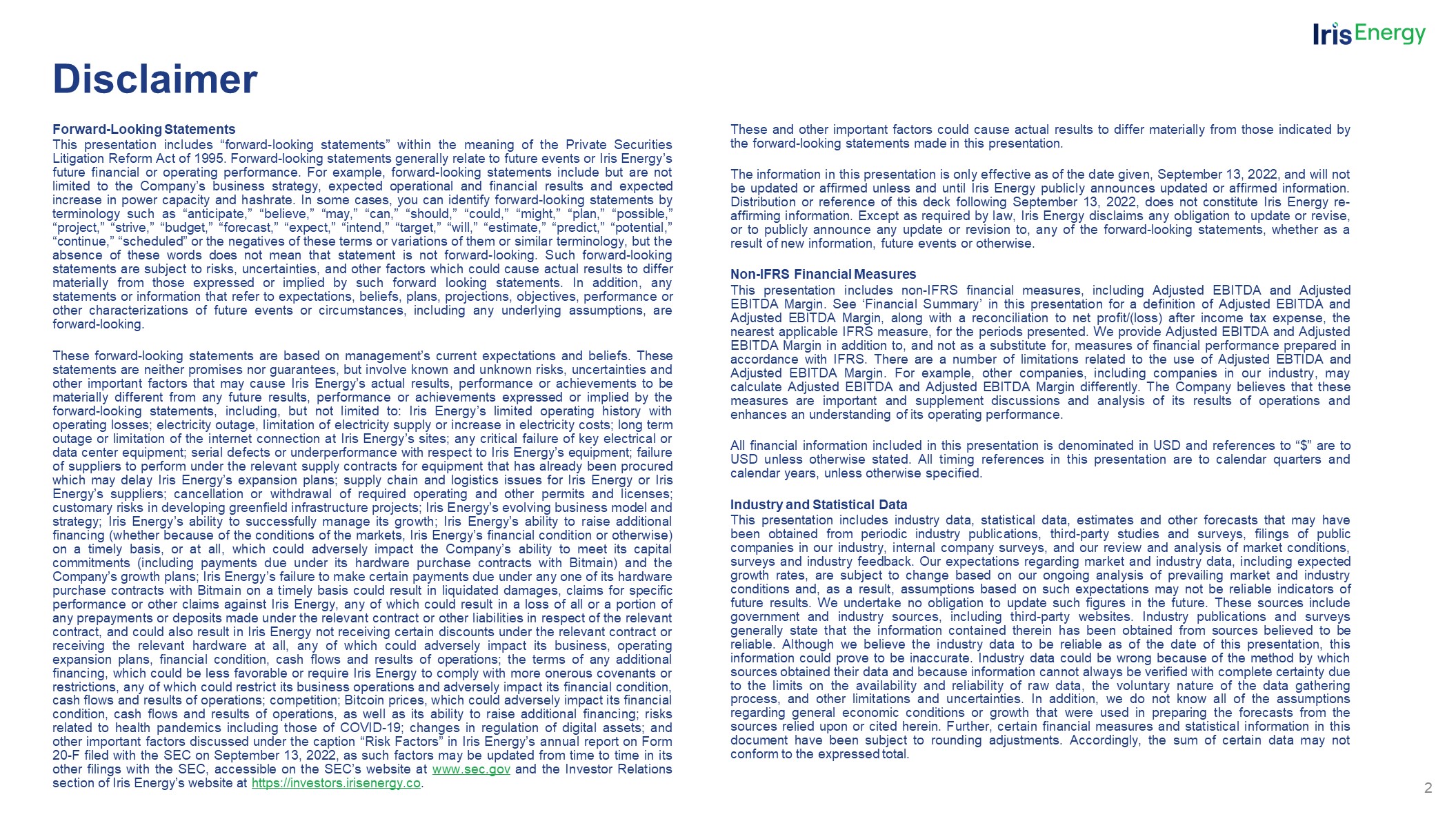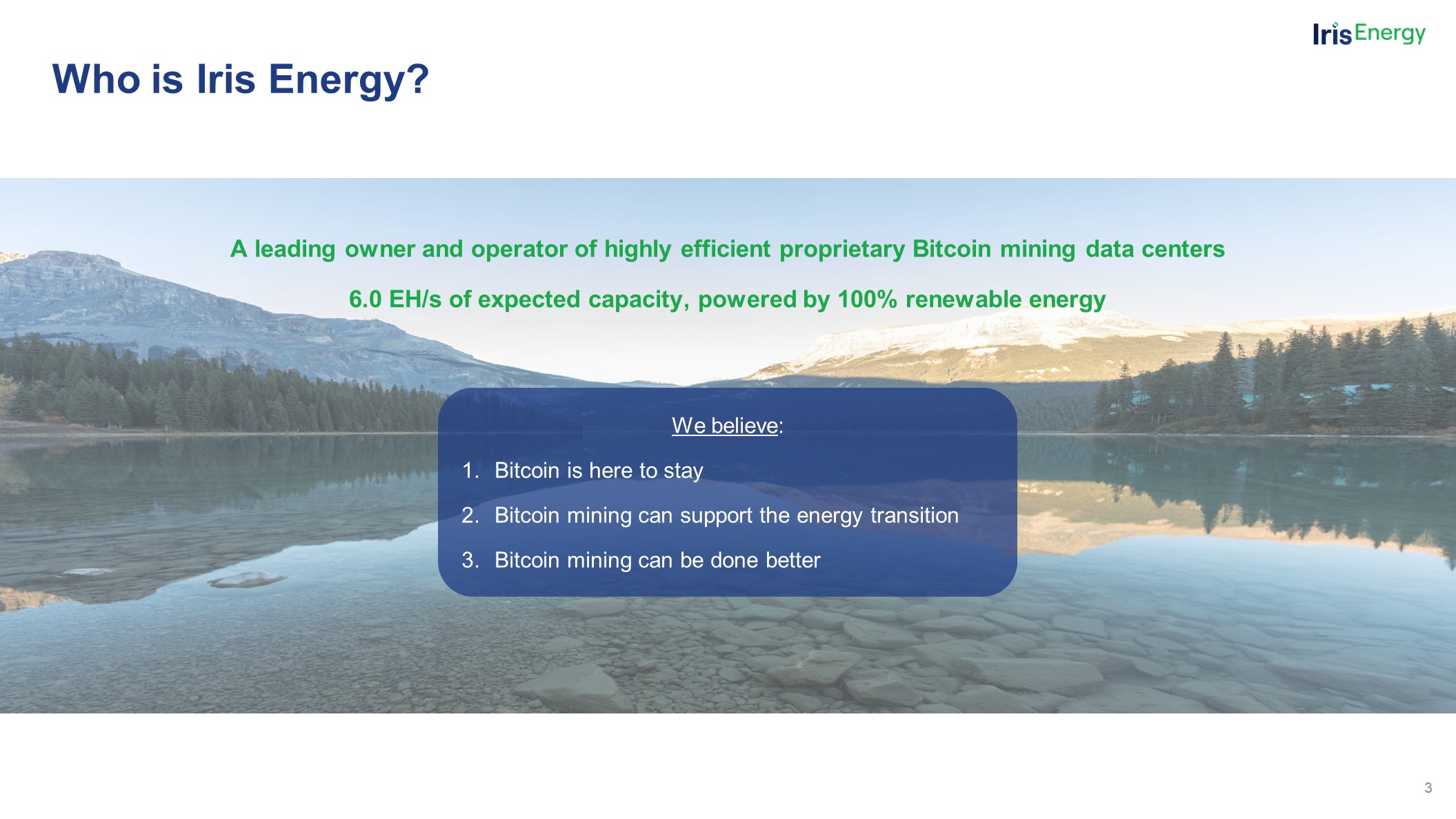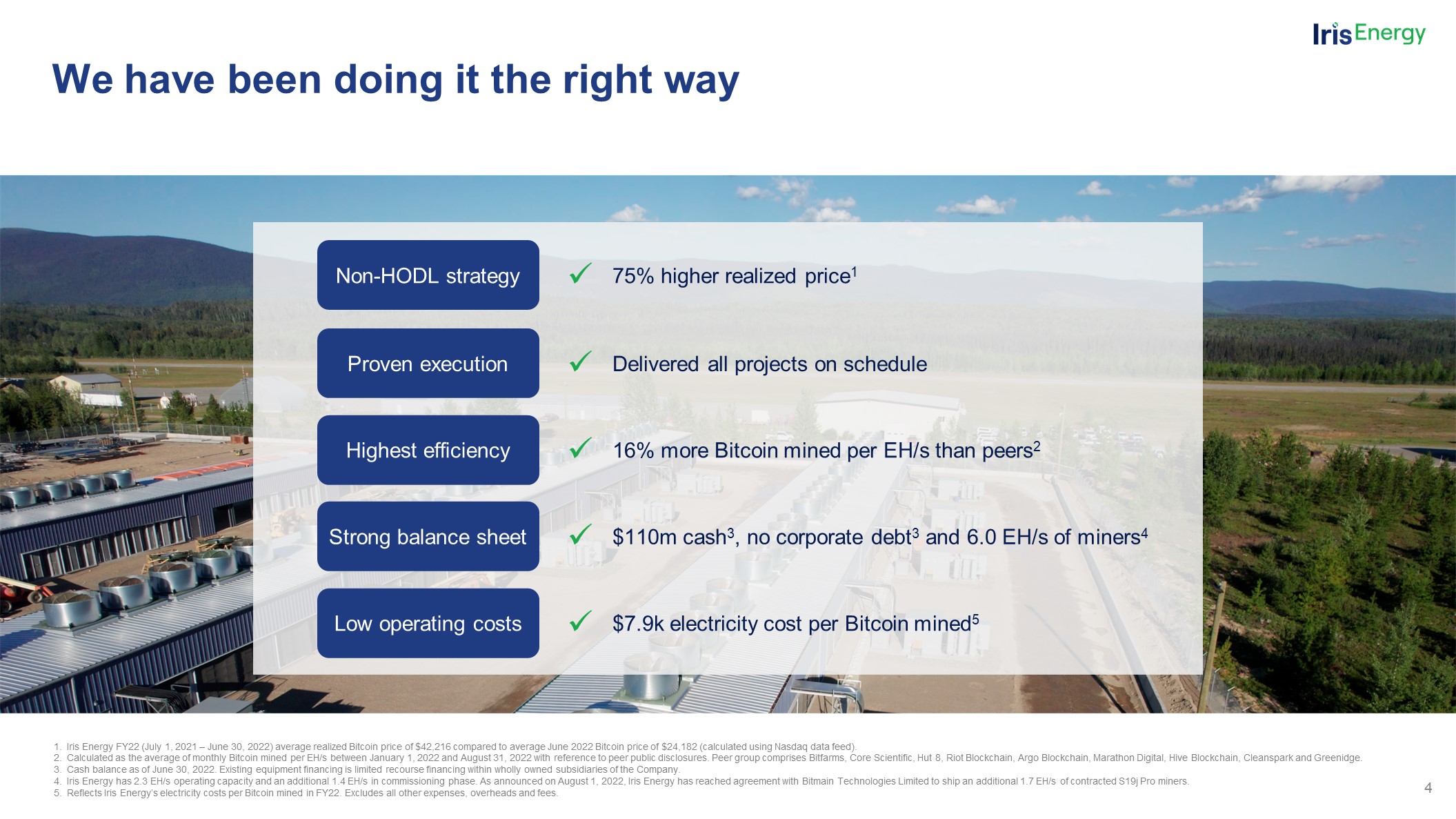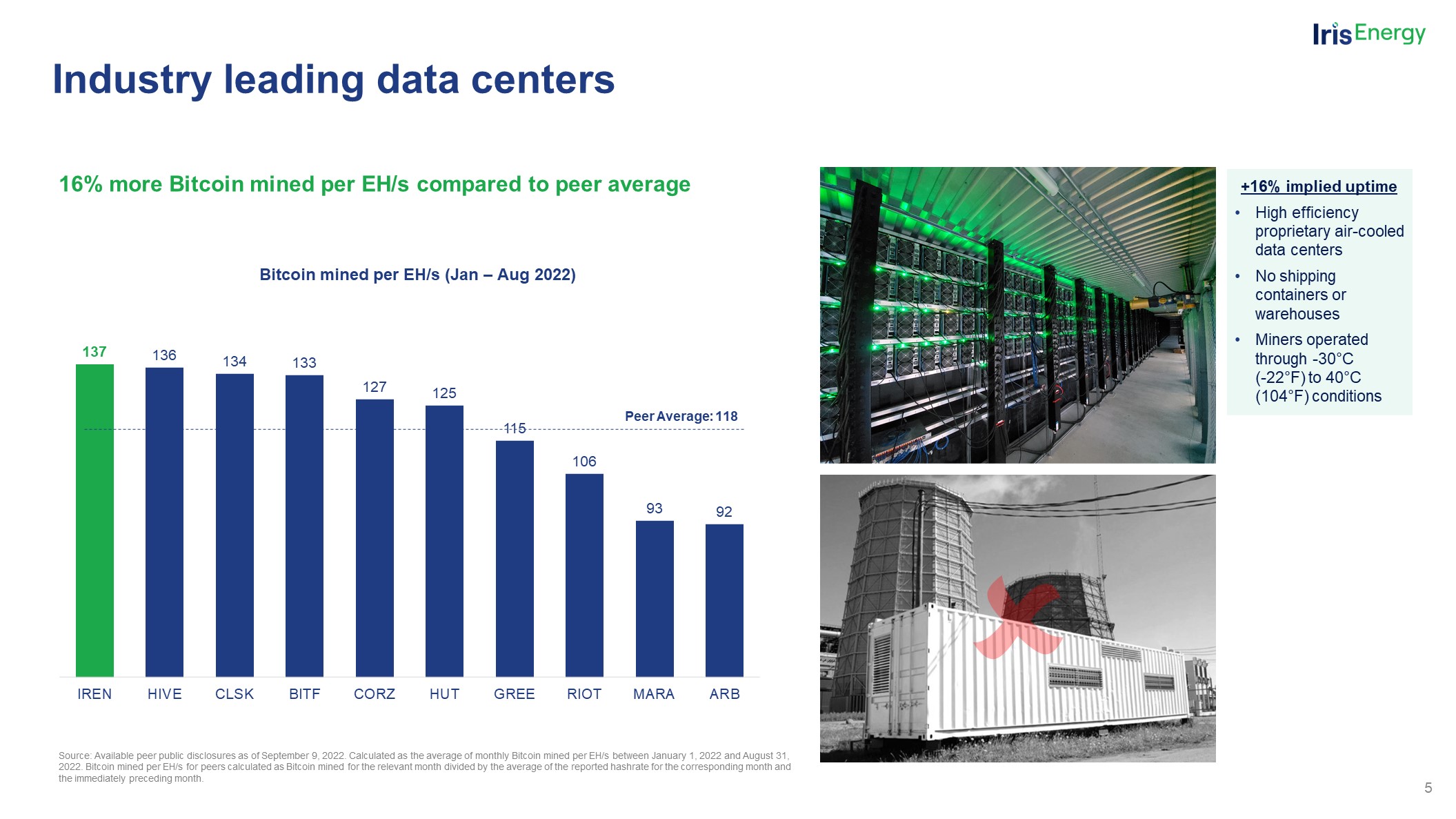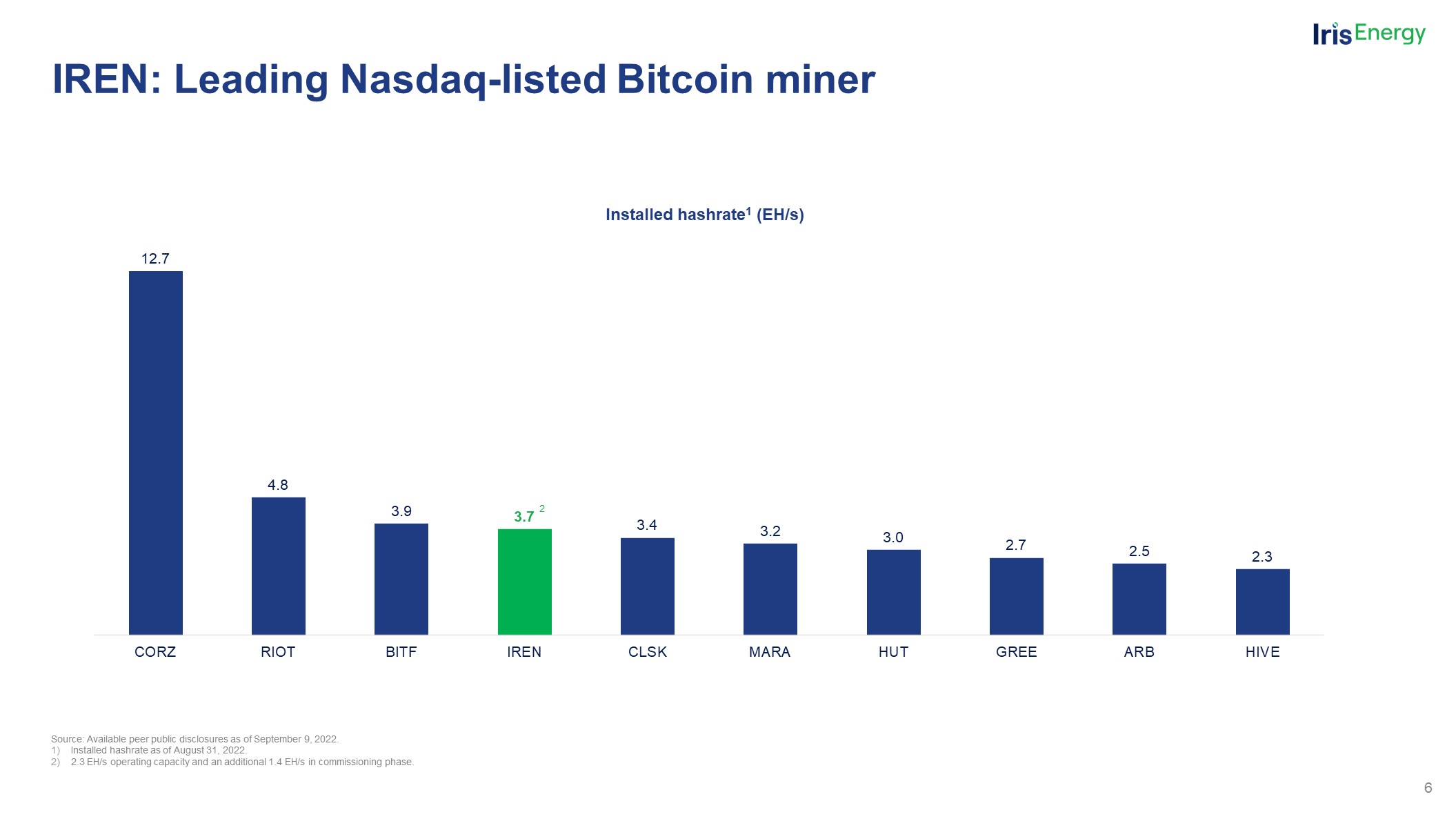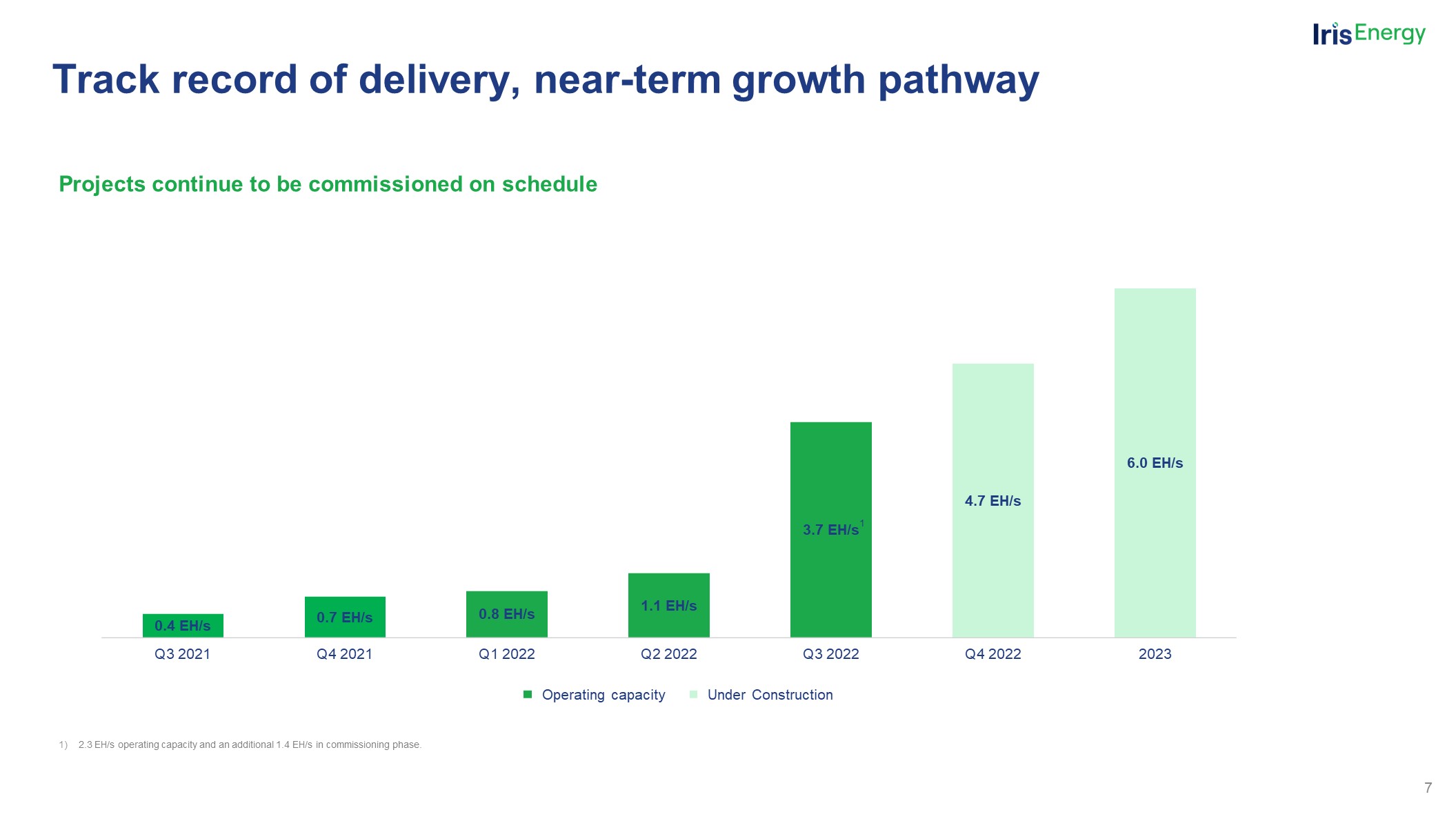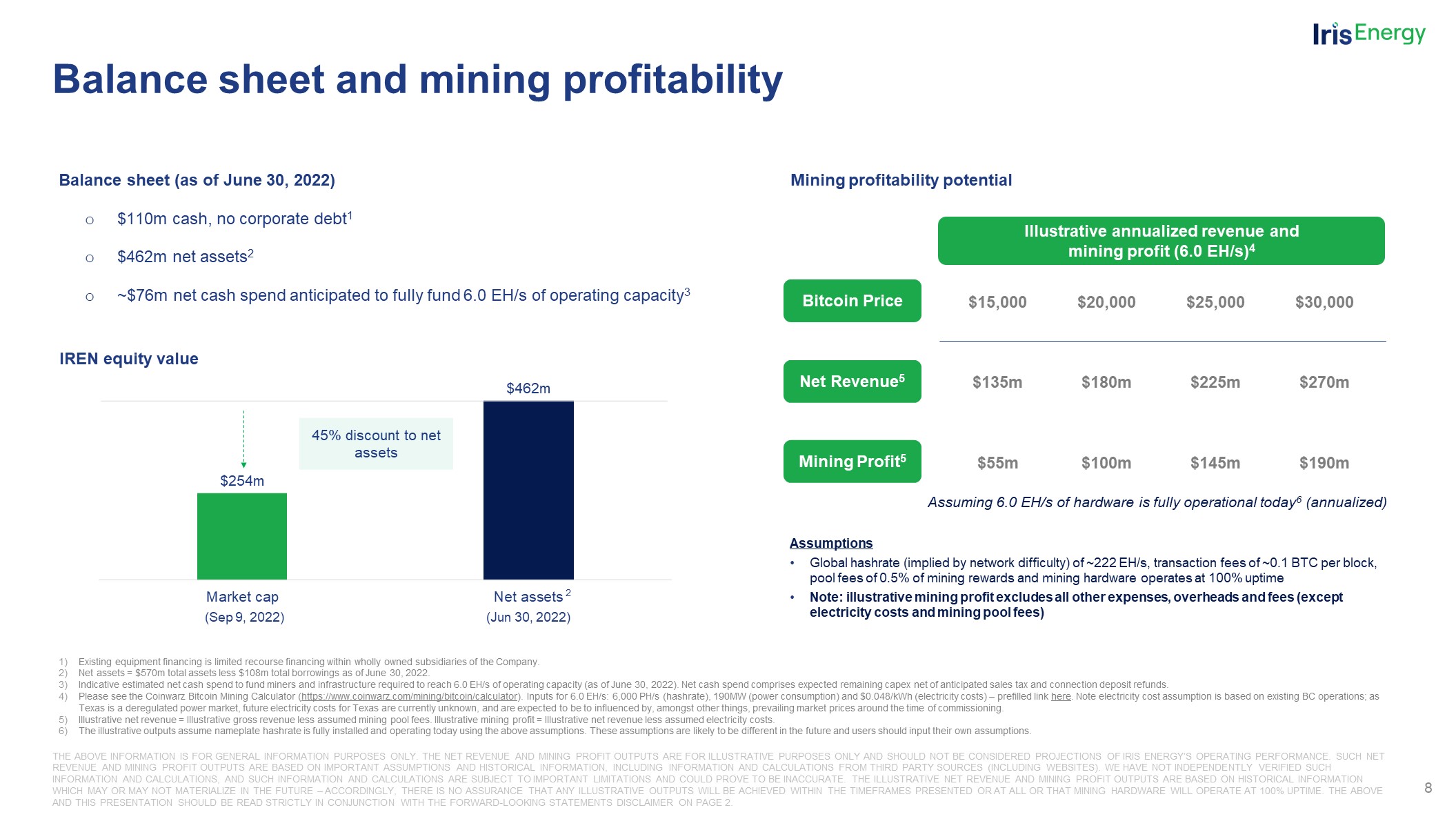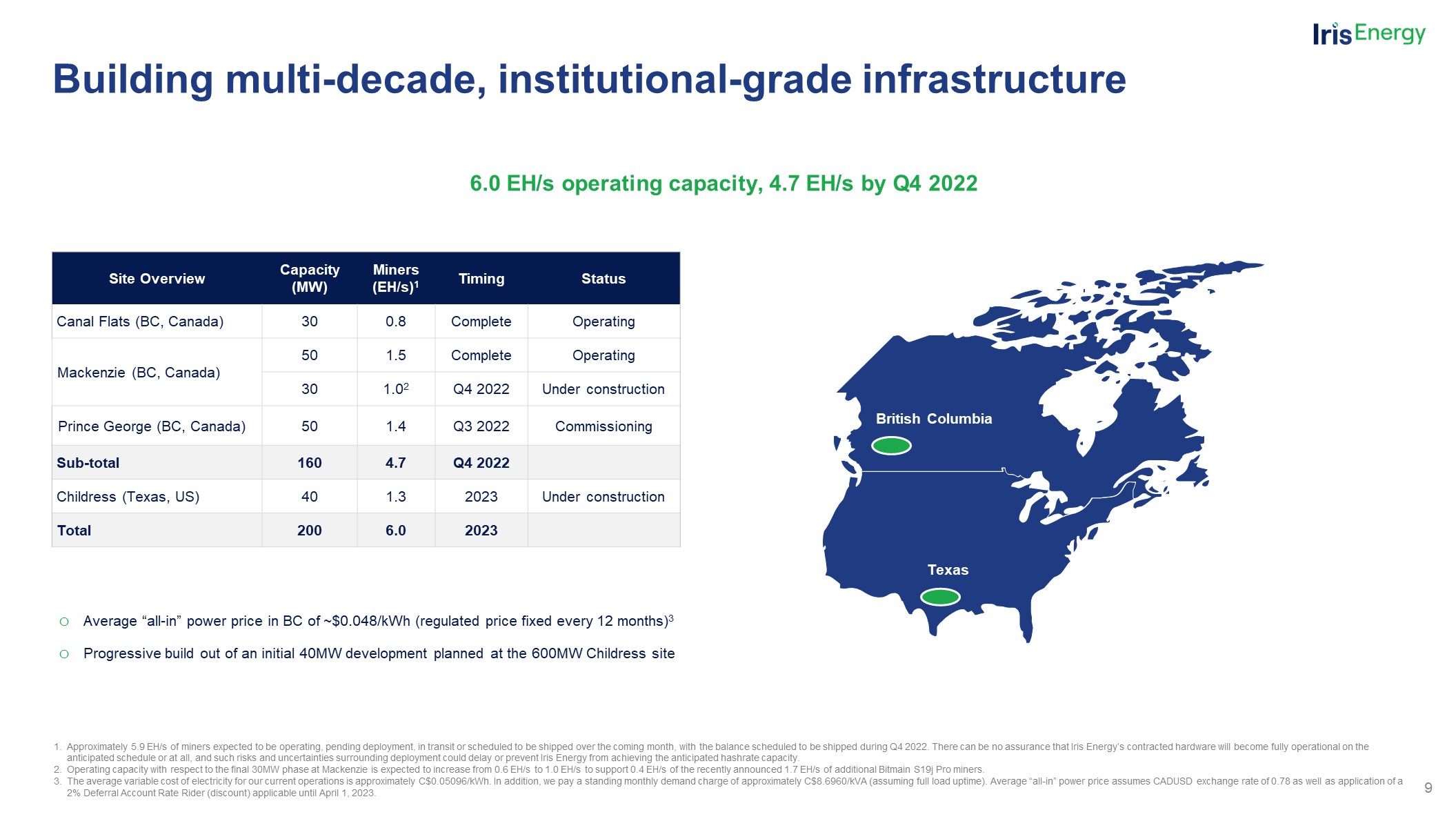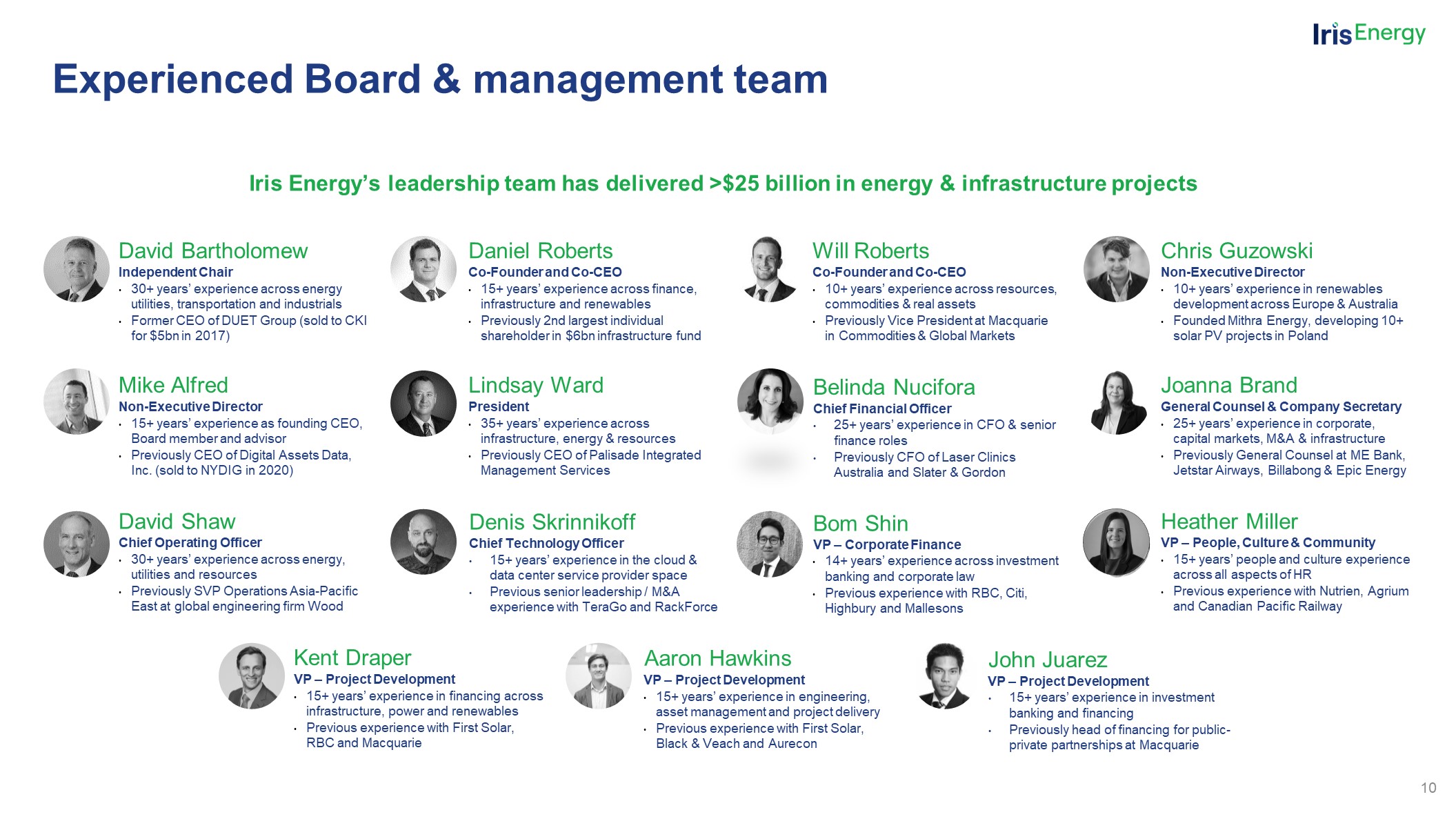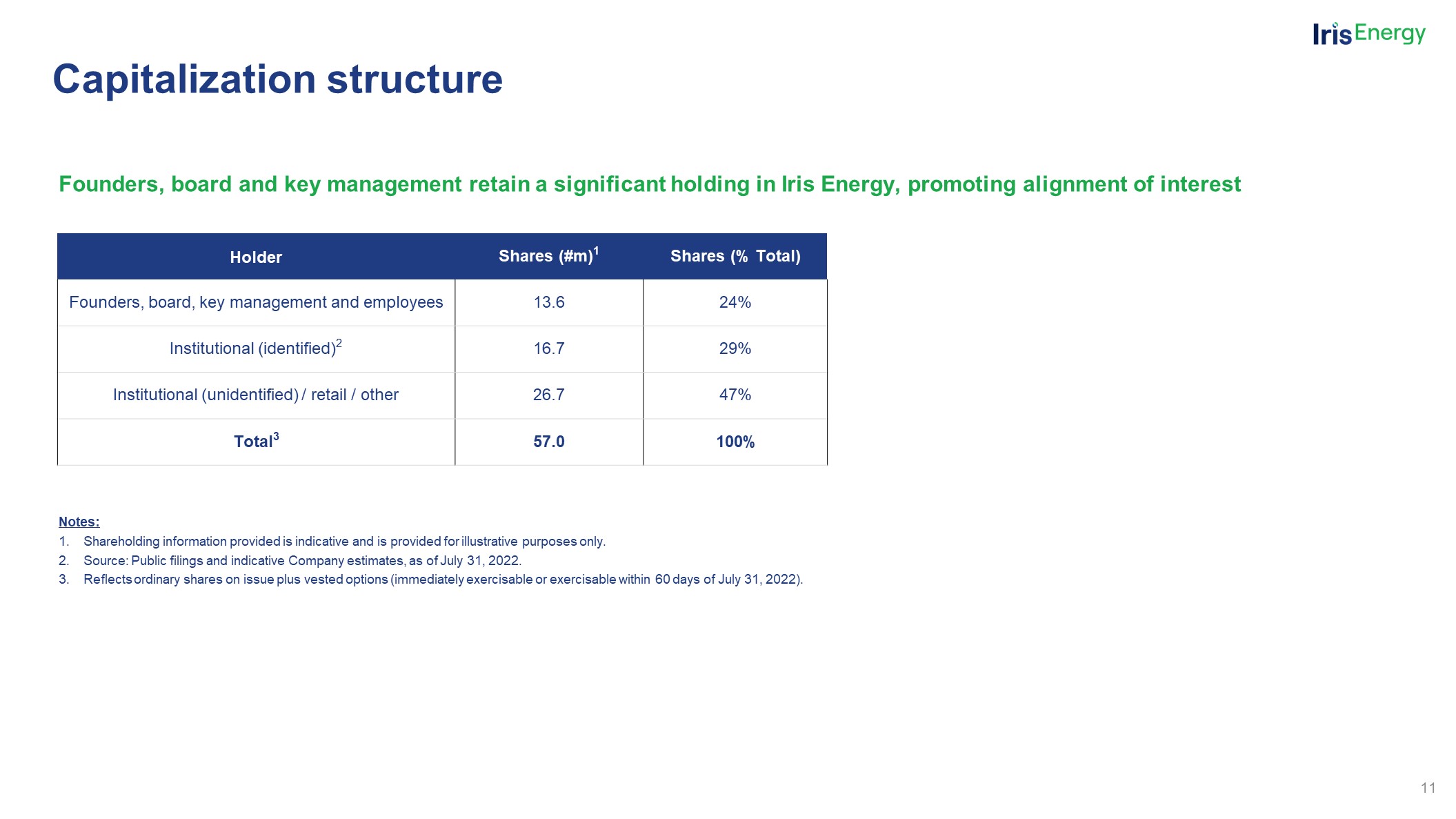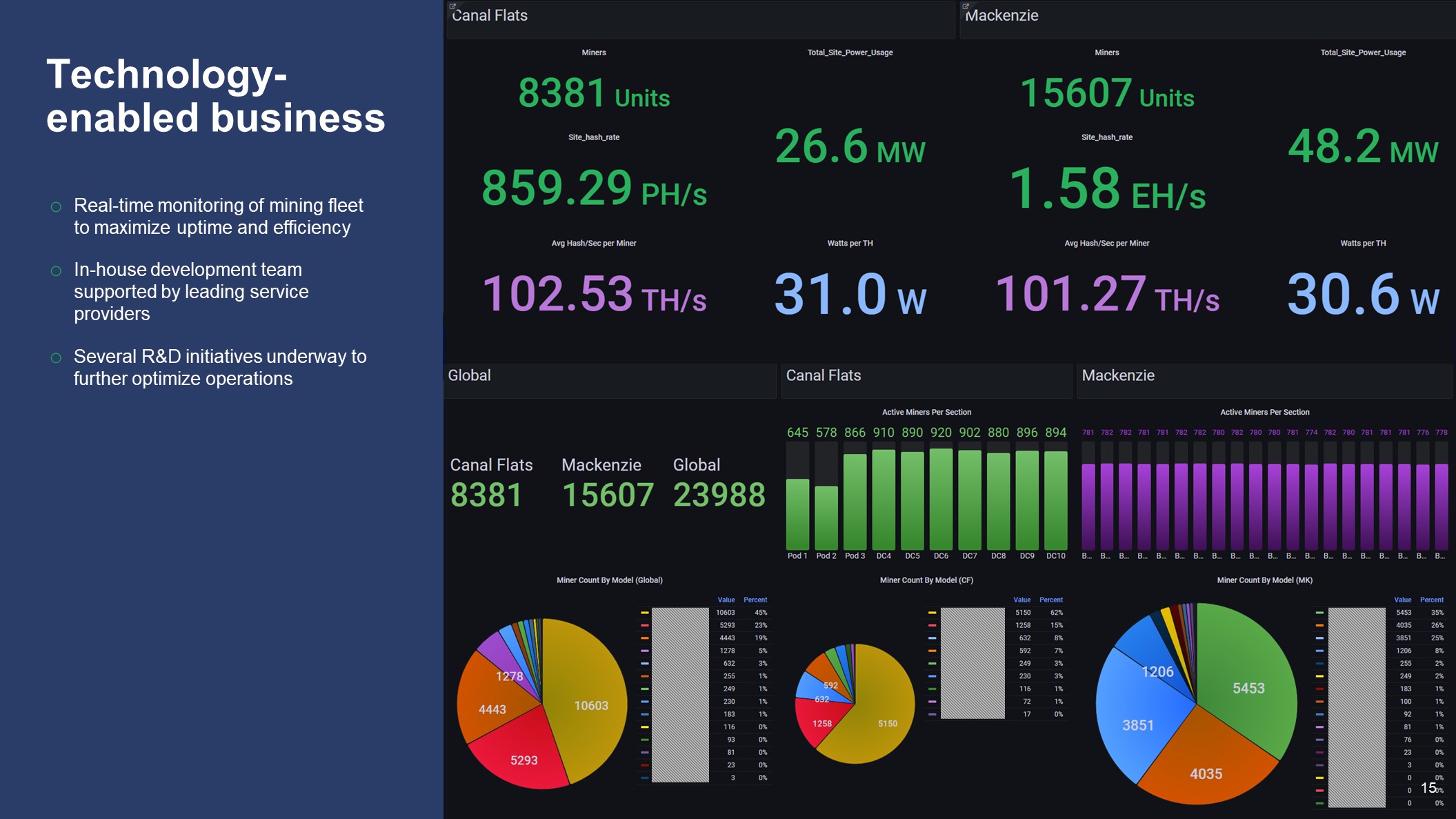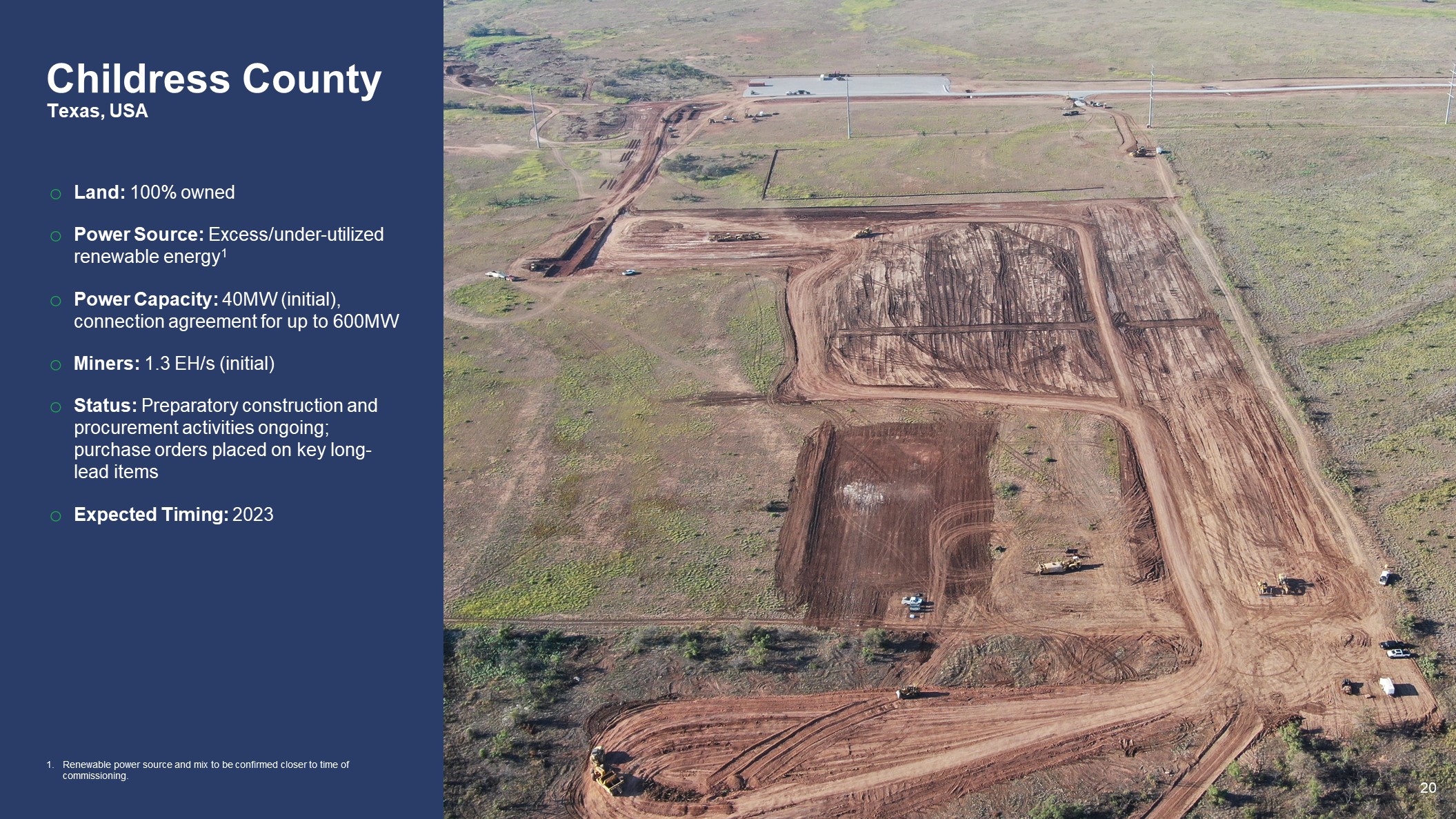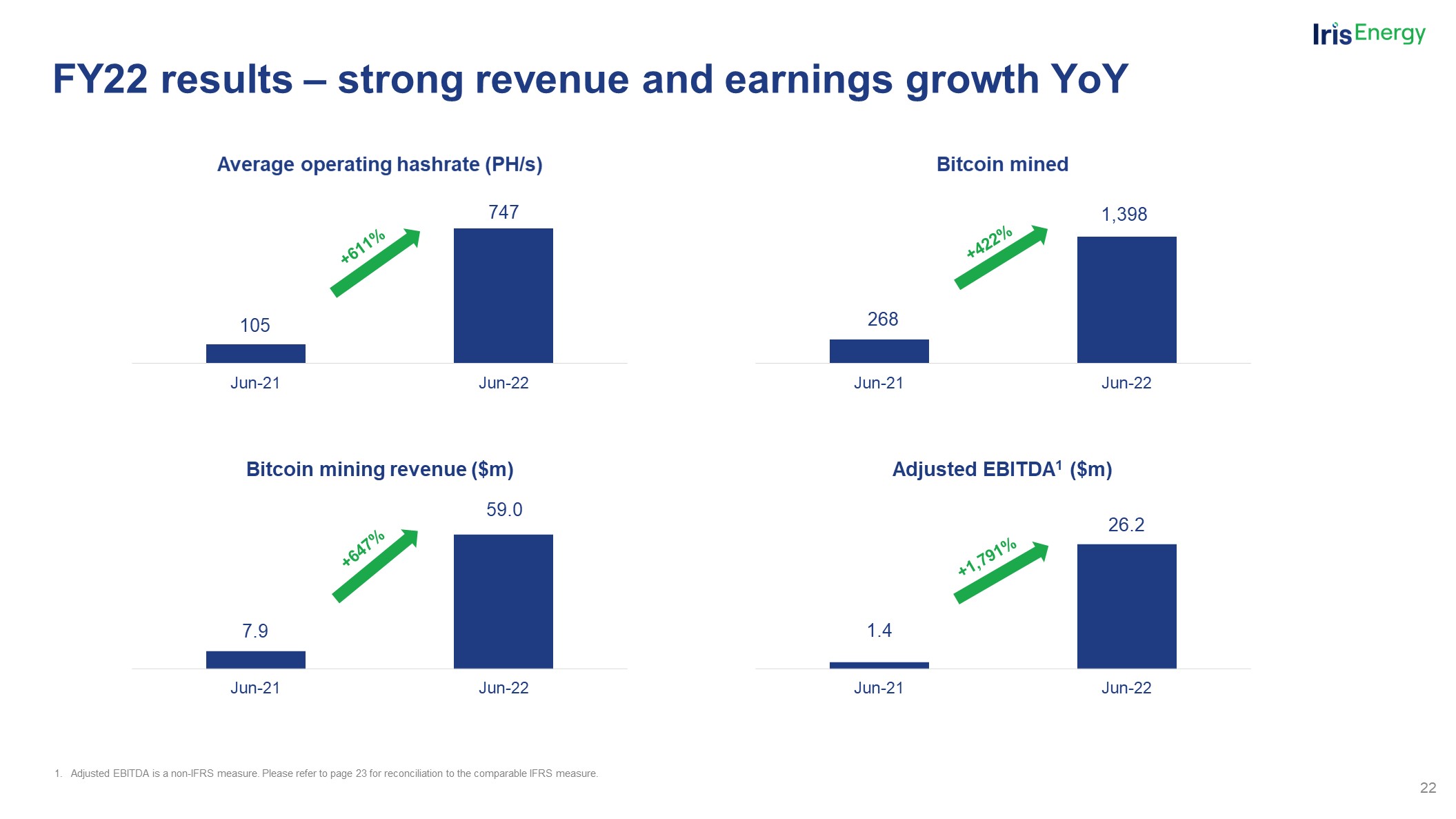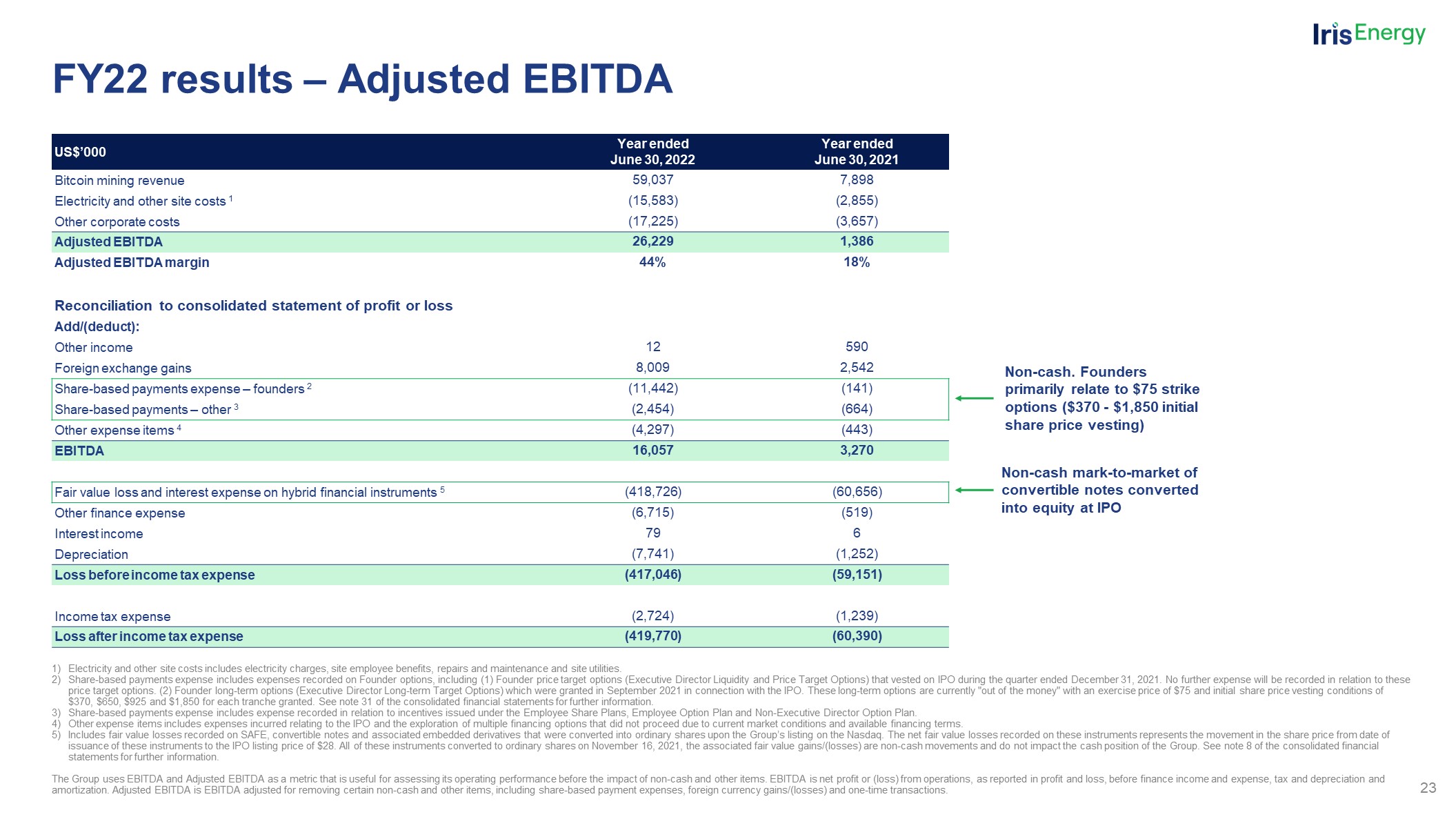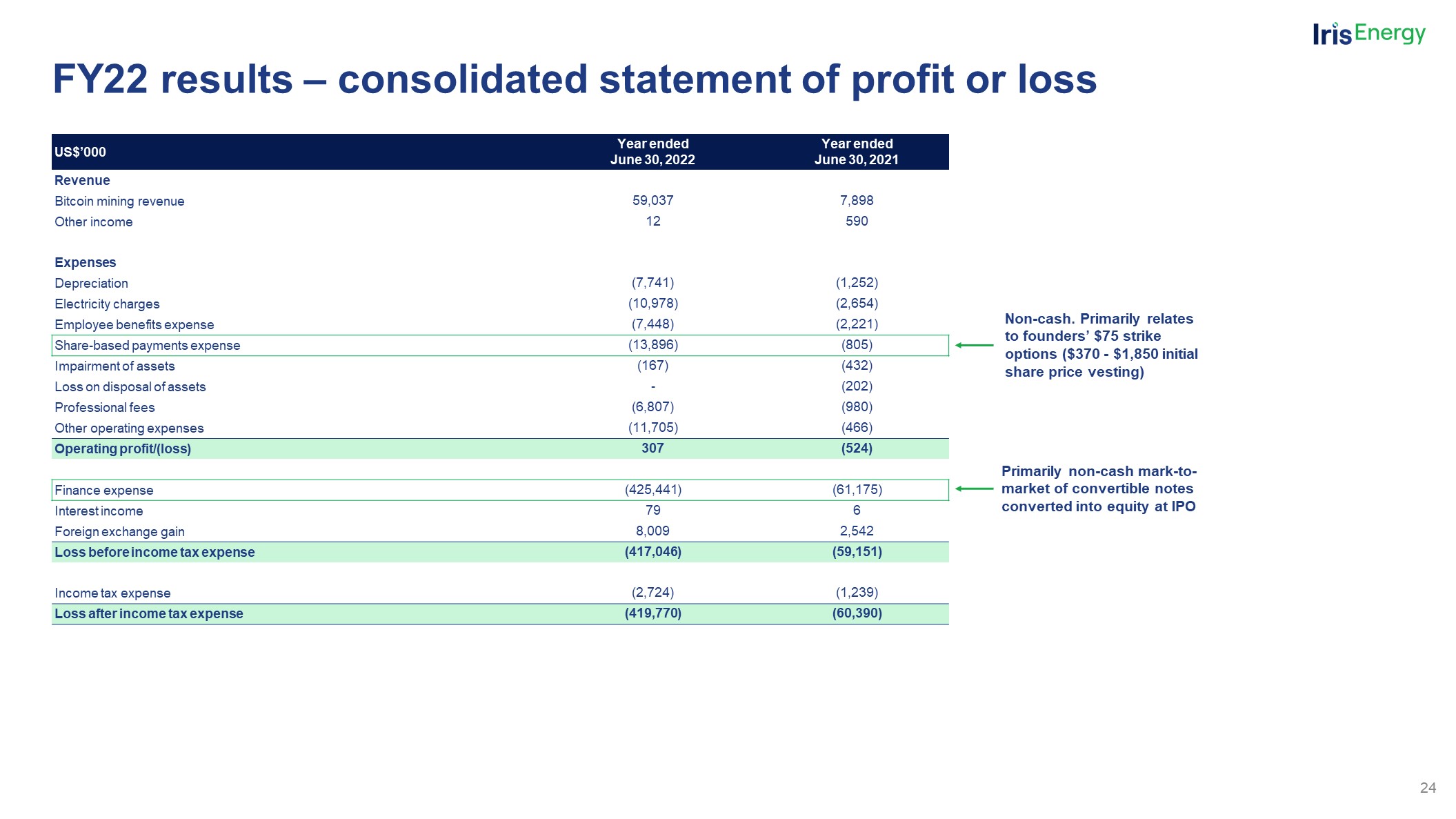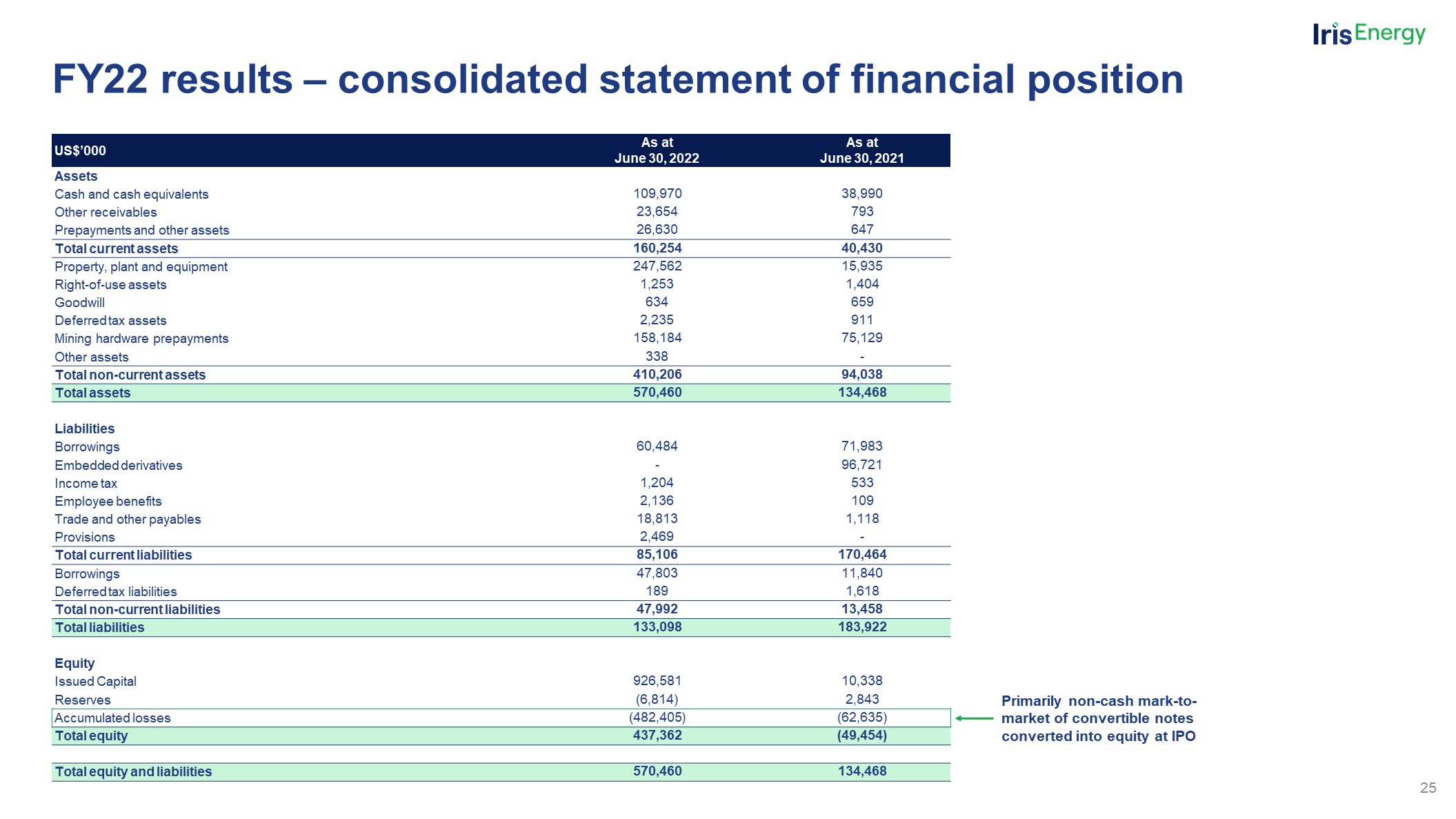Disclaimer Forward-Looking Statements This presentation includes “forward-looking statements” within the meaning of the Private Securities Litigation Reform Act of 1995. Forward-looking statements generally relate to future events or Iris Energy’s future financial or operating performance. For example, forward-looking statements include but are not limited to the Company’s business strategy, expected operational and financial results and expected increase in power capacity and hashrate. In some cases, you can identify forward-looking statements by terminology such as “anticipate,” “believe,” “may,” “can,” “should,” “could,” “might,” “plan,” “possible,” “project,” “strive,” “budget,” “forecast,” “expect,” “intend,” “target,” “will,” “estimate,” “predict,” “potential,” “continue,” “scheduled” or the negatives of these terms or variations of them or similar terminology, but the absence of these words does not mean that statement is not forward-looking. Such forward-looking statements are subject to risks, uncertainties, and other factors which could cause actual results to differ materially from those expressed or implied by such forward looking statements. In addition, any statements or information that refer to expectations, beliefs, plans, projections, objectives, performance or other characterizations of future events or circumstances, including any underlying assumptions, are forward-looking. These forward-looking statements are based on management’s current expectations and beliefs. These statements are neither promises nor guarantees, but involve known and unknown risks, uncertainties and other important factors that may cause Iris Energy’s actual results, performance or achievements to be materially different from any future results, performance or achievements expressed or implied by the forward-looking statements, including, but not limited to: Iris Energy’s limited operating history with operating losses; electricity outage, limitation of electricity supply or increase in electricity costs; long term outage or limitation of the internet connection at Iris Energy’s sites; any critical failure of key electrical or data center equipment; serial defects or underperformance with respect to Iris Energy’s equipment; failure of suppliers to perform under the relevant supply contracts for equipment that has already been procured which may delay Iris Energy’s expansion plans; supply chain and logistics issues for Iris Energy or Iris Energy’s suppliers; cancellation or withdrawal of required operating and other permits and licenses; customary risks in developing greenfield infrastructure projects; Iris Energy’s evolving business model and strategy; Iris Energy’s ability to successfully manage its growth; Iris Energy’s ability to raise additional financing (whether because of the conditions of the markets, Iris Energy’s financial condition or otherwise) on a timely basis, or at all, which could adversely impact the Company’s ability to meet its capital commitments (including payments due under its hardware purchase contracts with Bitmain) and the Company’s growth plans; Iris Energy’s failure to make certain payments due under any one of its hardware purchase contracts with Bitmain on a timely basis could result in liquidated damages, claims for specific performance or other claims against Iris Energy, any of which could result in a loss of all or a portion of any prepayments or deposits made under the relevant contract or other liabilities in respect of the relevant contract, and could also result in Iris Energy not receiving certain discounts under the relevant contract or receiving the relevant hardware at all, any of which could adversely impact its business, operating expansion plans, financial condition, cash flows and results of operations; the terms of any additional financing, which could be less favorable or require Iris Energy to comply with more onerous covenants or restrictions, any of which could restrict its business operations and adversely impact its financial condition, cash flows and results of operations; competition; Bitcoin prices, which could adversely impact its financial condition, cash flows and results of operations, as well as its ability to raise additional financing; risks related to health pandemics including those of COVID-19; changes in regulation of digital assets; and other important factors discussed under the caption “Risk Factors” in Iris Energy’s annual report on Form 20-F filed with the SEC on September 13, 2022, as such factors may be updated from time to time in its other filings with the SEC, accessible on the SEC’s website at www.sec.gov and the Investor Relations section of Iris Energy’s website at https://investors.irisenergy.co. These and other important factors could cause actual results to differ materially from those indicated by the forward-looking statements made in this presentation. The information in this presentation is only effective as of the date given, September 13, 2022, and will not be updated or affirmed unless and until Iris Energy publicly announces updated or affirmed information. Distribution or reference of this deck following September 13, 2022, does not constitute Iris Energy re-affirming information. Except as required by law, Iris Energy disclaims any obligation to update or revise, or to publicly announce any update or revision to, any of the forward-looking statements, whether as a result of new information, future events or otherwise. Non-IFRS Financial Measures This presentation includes non-IFRS financial measures, including Adjusted EBITDA and Adjusted EBITDA Margin. See ‘Financial Summary’ in this presentation for a definition of Adjusted EBITDA and Adjusted EBITDA Margin, along with a reconciliation to net profit/(loss) after income tax expense, the nearest applicable IFRS measure, for the periods presented. We provide Adjusted EBITDA and Adjusted EBITDA Margin in addition to, and not as a substitute for, measures of financial performance prepared in accordance with IFRS. There are a number of limitations related to the use of Adjusted EBTIDA and Adjusted EBITDA Margin. For example, other companies, including companies in our industry, may calculate Adjusted EBITDA and Adjusted EBITDA Margin differently. The Company believes that these measures are important and supplement discussions and analysis of its results of operations and enhances an understanding of its operating performance. All financial information included in this presentation is denominated in USD and references to “$” are to USD unless otherwise stated. All timing references in this presentation are to calendar quarters and calendar years, unless otherwise specified. Industry and Statistical Data This presentation includes industry data, statistical data, estimates and other forecasts that may have been obtained from periodic industry publications, third-party studies and surveys, filings of public companies in our industry, internal company surveys, and our review and analysis of market conditions, surveys and industry feedback. Our expectations regarding market and industry data, including expected growth rates, are subject to change based on our ongoing analysis of prevailing market and industry conditions and, as a result, assumptions based on such expectations may not be reliable indicators of future results. We undertake no obligation to update such figures in the future. These sources include government and industry sources, including third-party websites. Industry publications and surveys generally state that the information contained therein has been obtained from sources believed to be reliable. Although we believe the industry data to be reliable as of the date of this presentation, this information could prove to be inaccurate. Industry data could be wrong because of the method by which sources obtained their data and because information cannot always be verified with complete certainty due to the limits on the availability and reliability of raw data, the voluntary nature of the data gathering process, and other limitations and uncertainties. In addition, we do not know all of the assumptions regarding general economic conditions or growth that were used in preparing the forecasts from the sources relied upon or cited herein. Further, certain financial measures and statistical information in this document have been subject to rounding adjustments. Accordingly, the sum of certain data may not conform to the expressed total. 2

